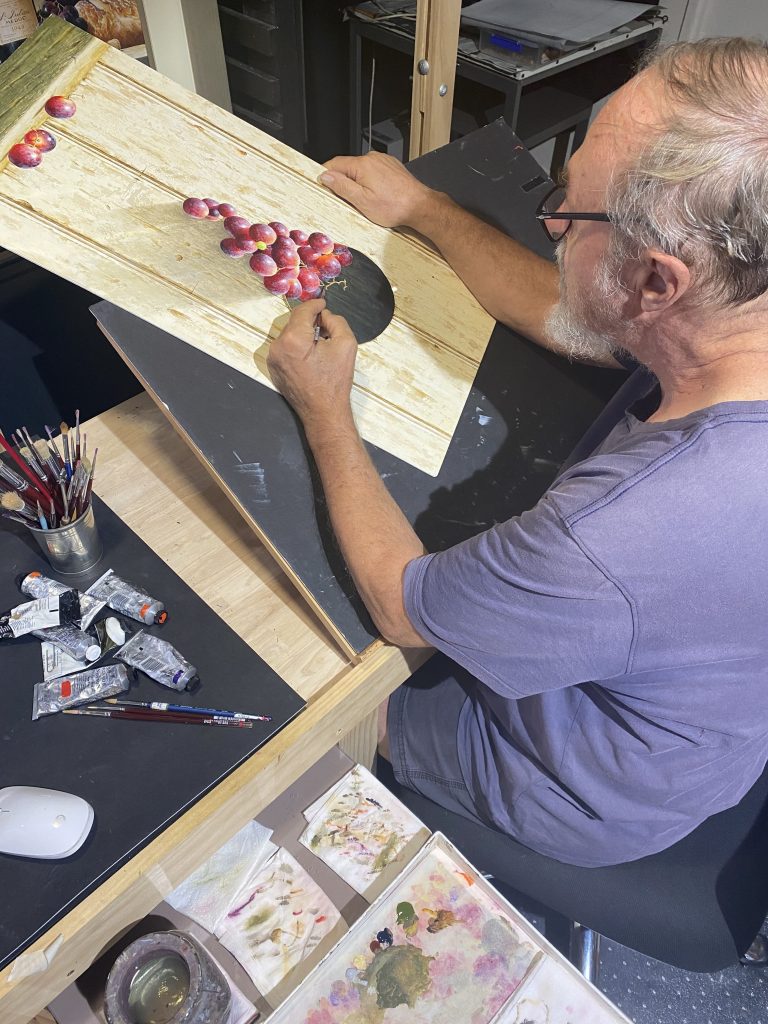Ian Mastin Still Life Painter
You commented “ …everyday objects which have no intrinsic value except for the richness of their history and the hands through which they have passed.” Discuss.
I am drawn to paint the kind of subject matter which would have been utilised in everyday life through the ages. Some items were simply discarded after use, for example bottles, ointment pots and clay pipes. Others were purely utilitarian, such as tools, kitchen and eating utensils, spectacles, night lights etc. And then there were the valued items – lockets, books, the keepsake box with its contents. All of these things speak of a lifetime hand to mouth struggle for most people that we can barely imagine in the 21st Century. In a way, I am paying homage to the resilience of the human spirit and appreciation for our forebears.
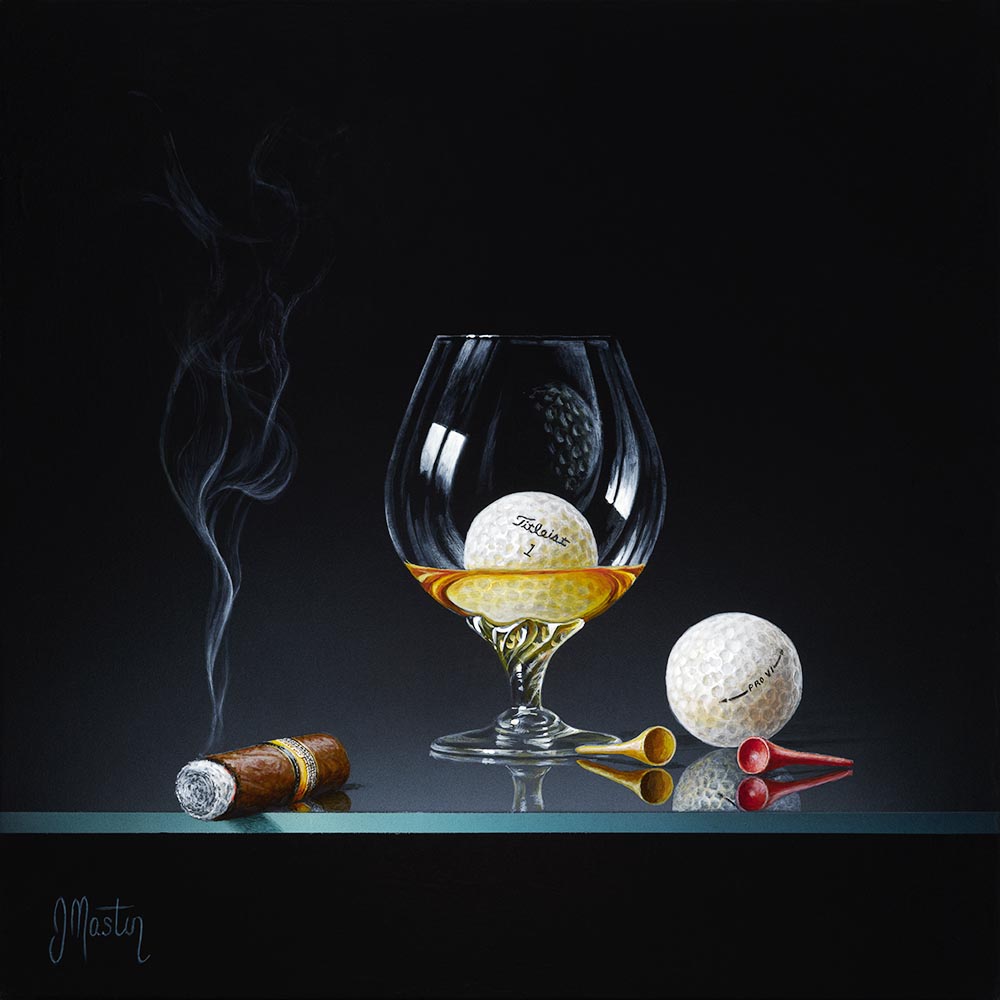
Hole in One
Can you discuss how you choose a combination of objects to paint?
Once I have settled on a theme – a meal spread or musical setting as a complex example, or a single main feature such as a particularly interesting pot, decanter, vase or simply a piece of fruit, I then begin to look for complementary items to balance the setting.
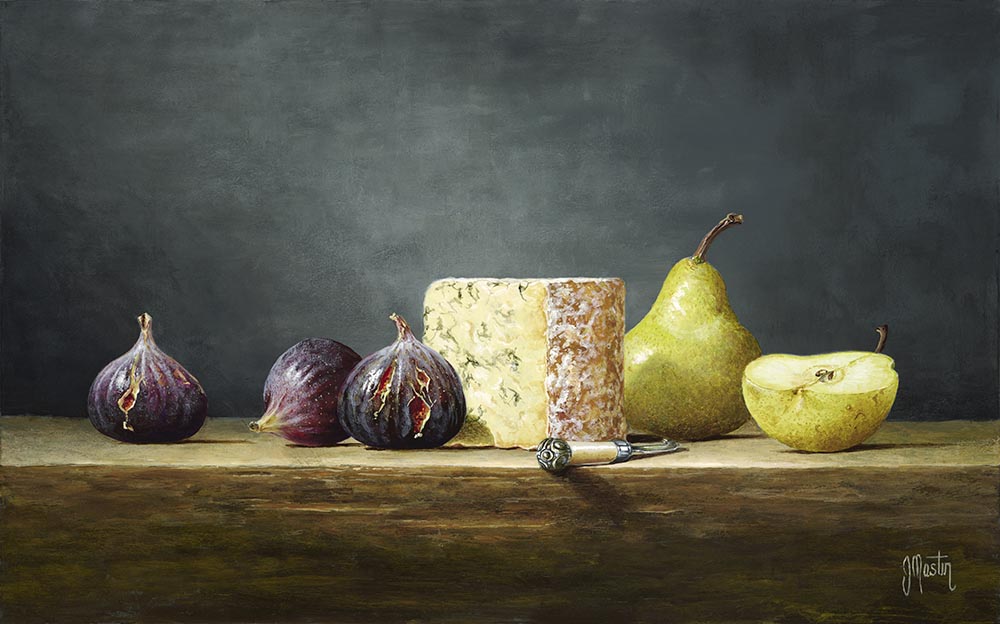
Colston Bassett Stilton
Over the years, from my travels I have collected a vast array of subject matter large and (mostly) small. Although time consuming, it can be very enjoyable to try out various combinations to get the balance ‘just right’. Although the overall theme is paramount, oftentimes it is something totally unexpected or unconnected that makes it work. I try not to overthink the setting, what I am seeking is the overall ‘feel’ and the balance. This is where texture, hue, tone and lighting become crucial.
What is one of your favourite paintings from The Golden Age, that always gives you inspiration?
My Favourite artist from that era would have to be Vermeer. Favourite painting? A bit like choosing my favourite music, it will depend on my mood (anything from Joe Bonamassa to Purcell), although I never tire of Jan Lievens ‘Still life with Books’ (Vanitas Stilleven).
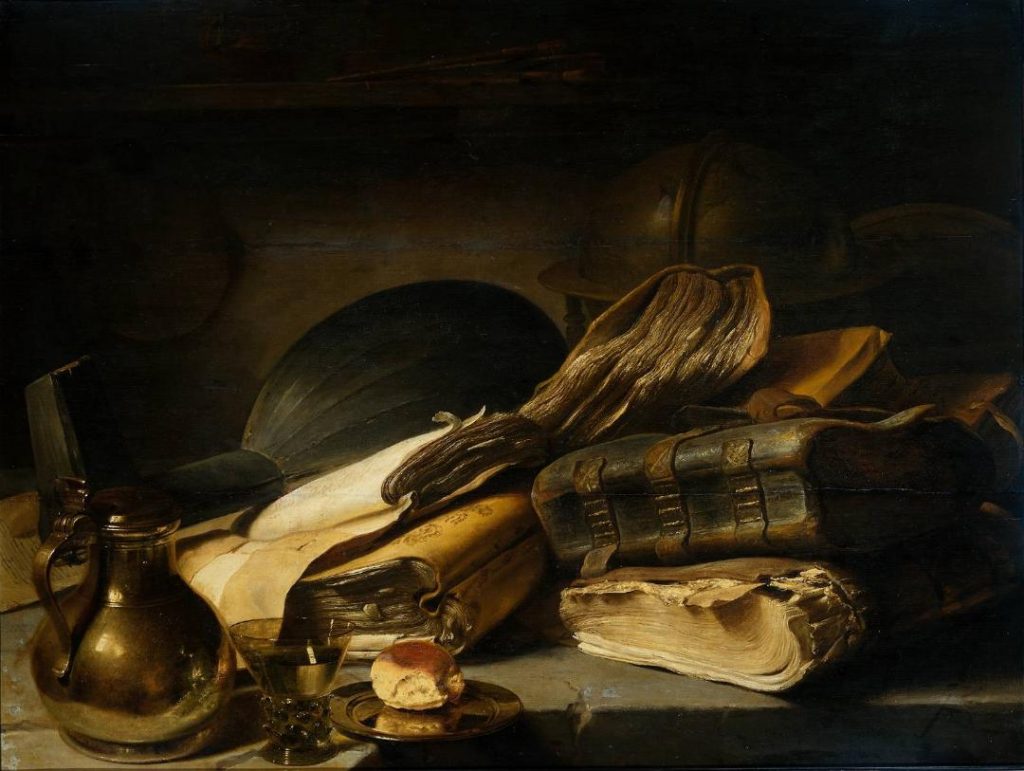
Jan Lievens ‘Still life with Books’ (Vanitas Stilleven).
Discuss the importance of ‘Chiaroscuro’ meaning light and Dark in art, in your own art.
I think that is one of the reasons why I am so inspired by so many of the great Dutch and Flemish artists from the Golden Age who excelled in this style. Another favourite, Joseph Wright of Derby was also a superb proponent. His work “The Orrery” has a magical quality. It is the juxtaposition of the strong contrasts that for me brings a painting to life and has the capacity to bring an almost 3D quality to arrest the eye upon the simplest of subjects on canvas.
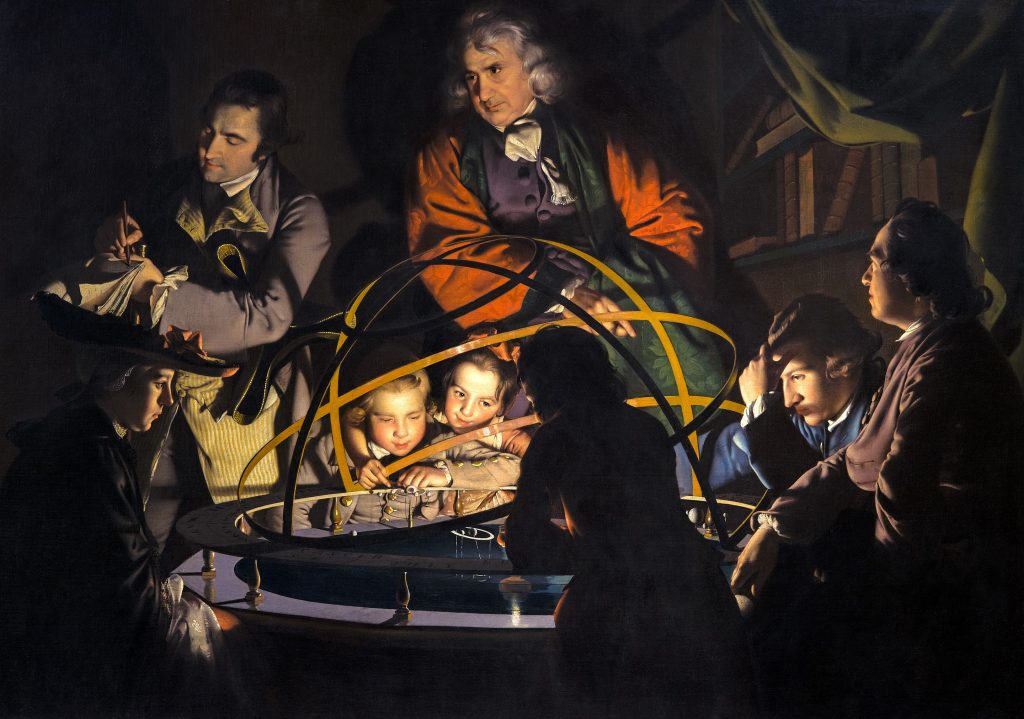
Joseph Wright of Derby
How do you keep up with the demand as you are represented in both Australia and the UK?
Until Covid hit, I was travelling twice a year to the UK to provide my galleries there with fresh work, and habitually worked 60-80 hour weeks. I have since eased my output considerably and find I am enjoying the change of pace immensely. It has given me the luxury of thoroughly enjoying each new piece I now choose to create.
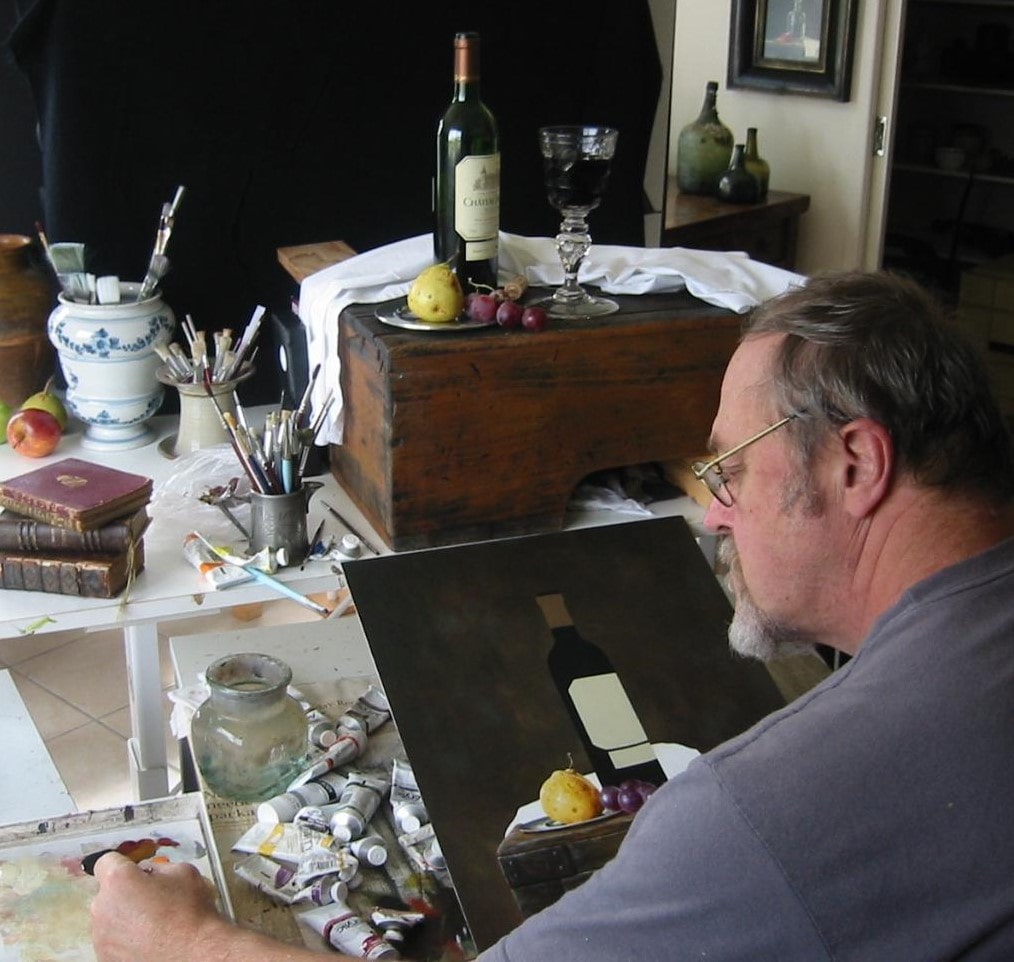
The Grand Goblet
Are you ever asked to paint a still life with a piece of pieces from the purchasers collection?
Quite often. It is always a pleasure to incorporate subjects that have special meaning to the buyer.
Do your paintings hold meanings through the objects you use as in the paintings of The Golden Age?
I sometimes do include objects that have a particular meaning to me or as a request from a buyer. More often than not though, the reference is hinted at in the title of the piece. I often create a play on words or pay homage to a favourite book, author or piece of music.
Can you discuss two paintings, one where the objects are prominently fruit and another manmade objects?
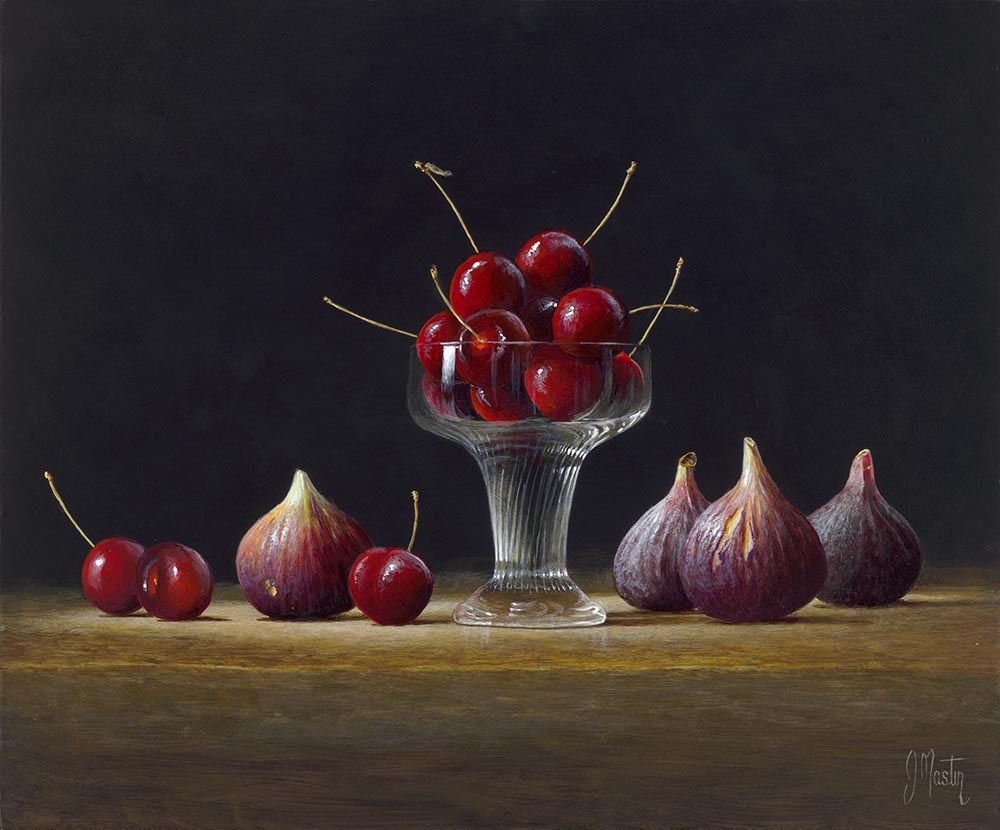
“Rising to the occasion”.
A simple composition featuring figs, cherries and glass. The textures, colours and play of reflected light complemented the setting well. The exquisite perfection of the stemmed bowl contrasting with the wonderfully imperfect organic presence of the figs I found particularly satisfying.
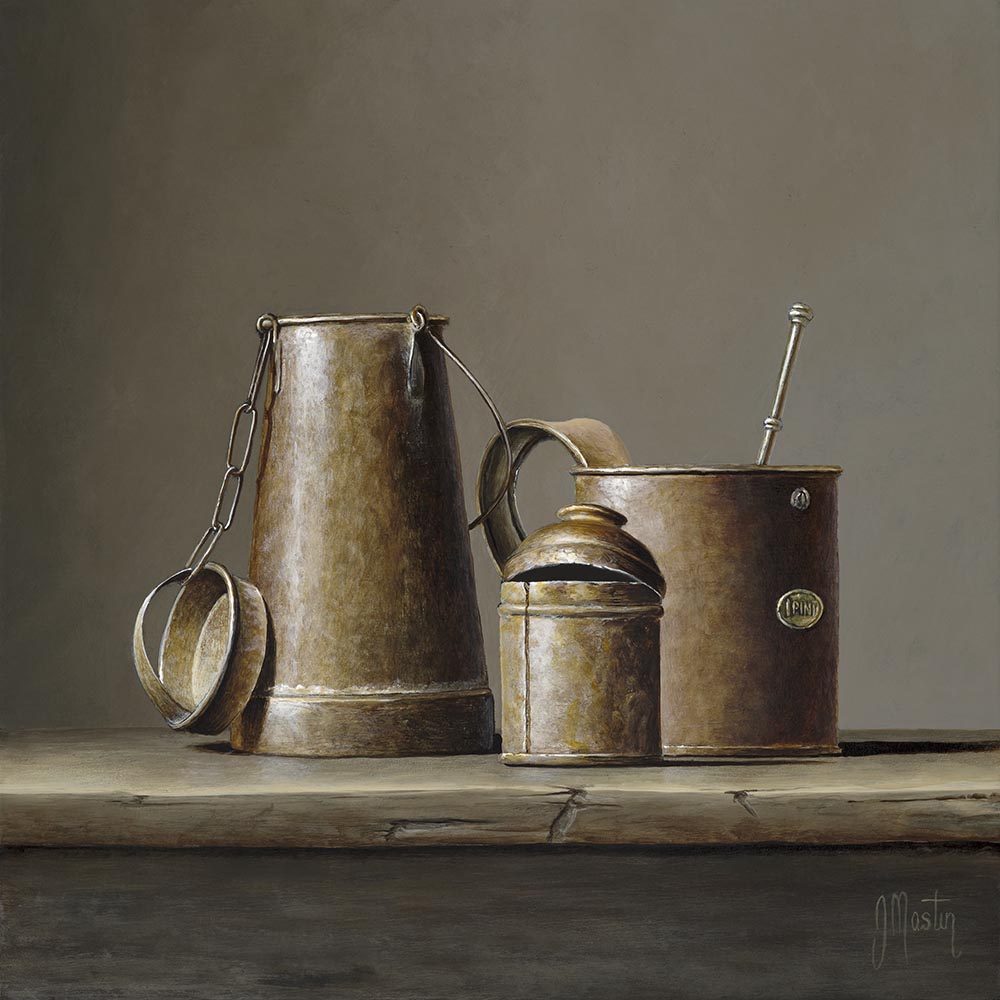
“Old Tin Pots”.
Another simple creation which took some considerable time to arrange, both subject setting and choice of surrounding colour and tone to best achieve what I was seeking to represent. A perfect example of the most mundane of throwaway items featured to appreciate and study in a new light.
How do you use light in your studio set up, natural or electric light?
Virtually all my painting subjects are set up in a shadow box with the light source entering from the left (window) side. Although I prefer to work with natural light from the window, because I work often early morning or late evening, I also use white (natural) electric light from the same direction. Experiencing the vagaries of a consistent light source, I am in awe of those Masters from earlier generations who had nothing more than natural or candle light.
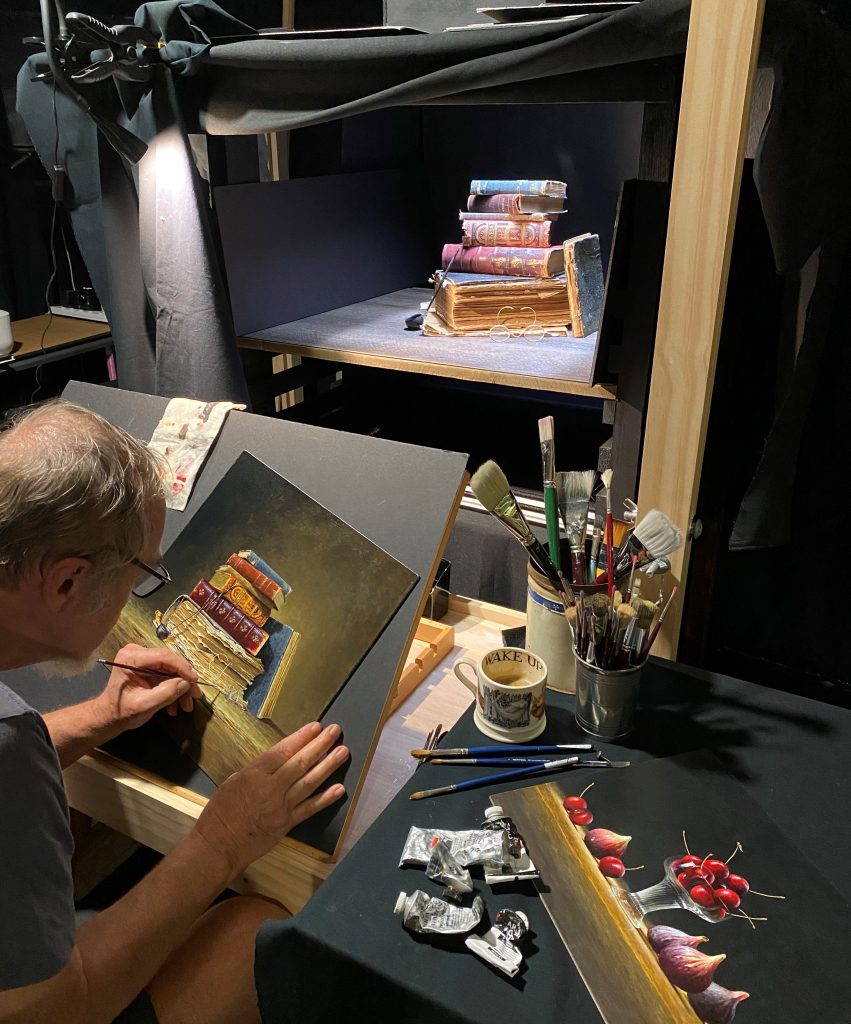
The Grand Tome
You continue to provide pieces for the Woodgate Art in Spring – tell us about this connection?
My little community of Woodgate is the ideal environment for what I do. The demographic consists of a considerable number of retirees and many of them in their retirement have discovered a serious talent for arts and various other crafts. About ten years ago it was decided to hold an annual exhibition to show off the fruits of our endeavours. It has since grown to become an important component on the Woodgate calendar, and many visitors from around Australia co-ordinate their visits to coincide with this event. I highly recommend it.
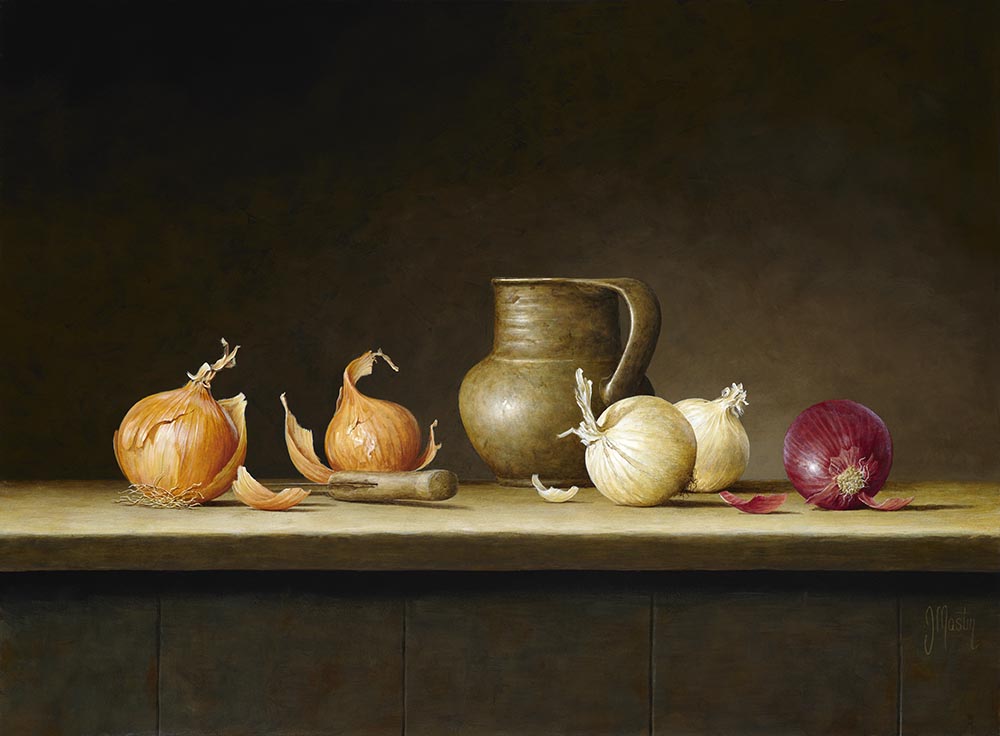
Pot with Mixed Onions
Comment on two commissions Lest We Forget and A Life of Medicine.
Where the commission came from and why?
The objects used and why?
“Lest We Forget” was, a commission requested for a significant birthday for a nephew of mine.
He is a serious student of the art of war, particularly the Australian involvement in the First World War. All the pieces included in the set-up of the painting are from his personal collection. A very intense, thought provoking but rewarding commission.
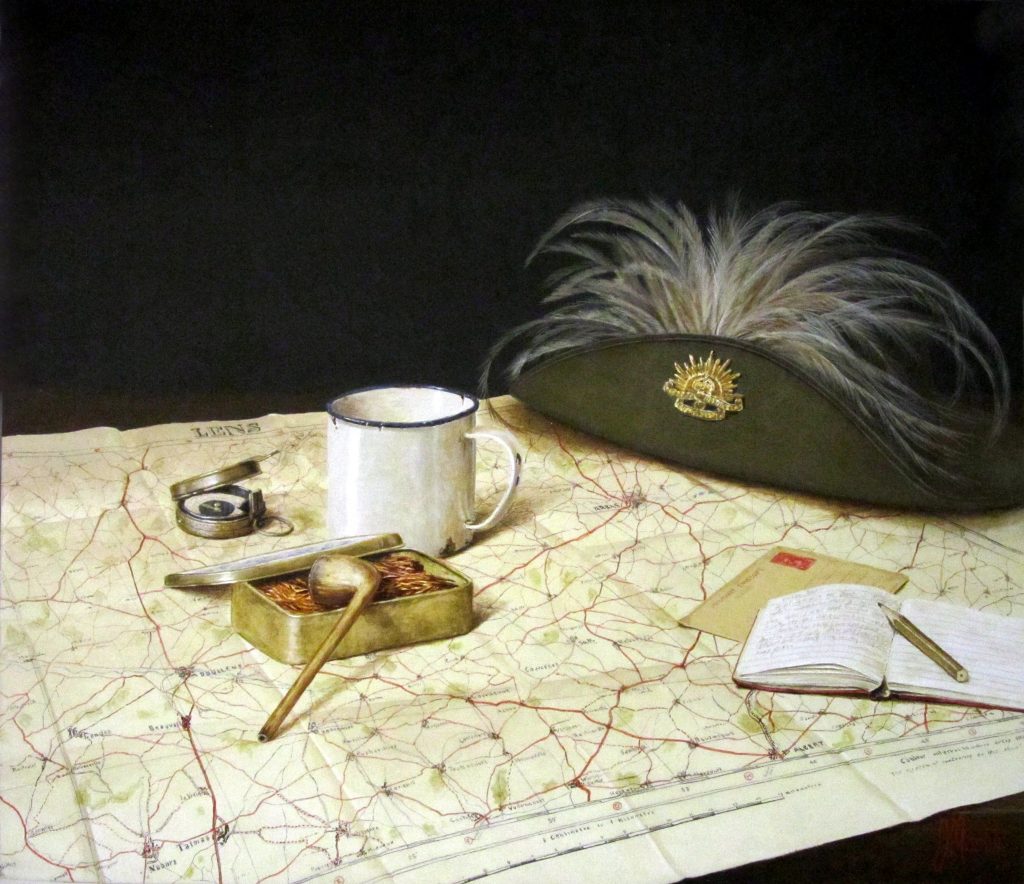
Lest We Forget
“A Life in Medicine” was a straight forward request from the family of a general practitioner upon his retirement. Many of the items included in the painting were provided by the family.
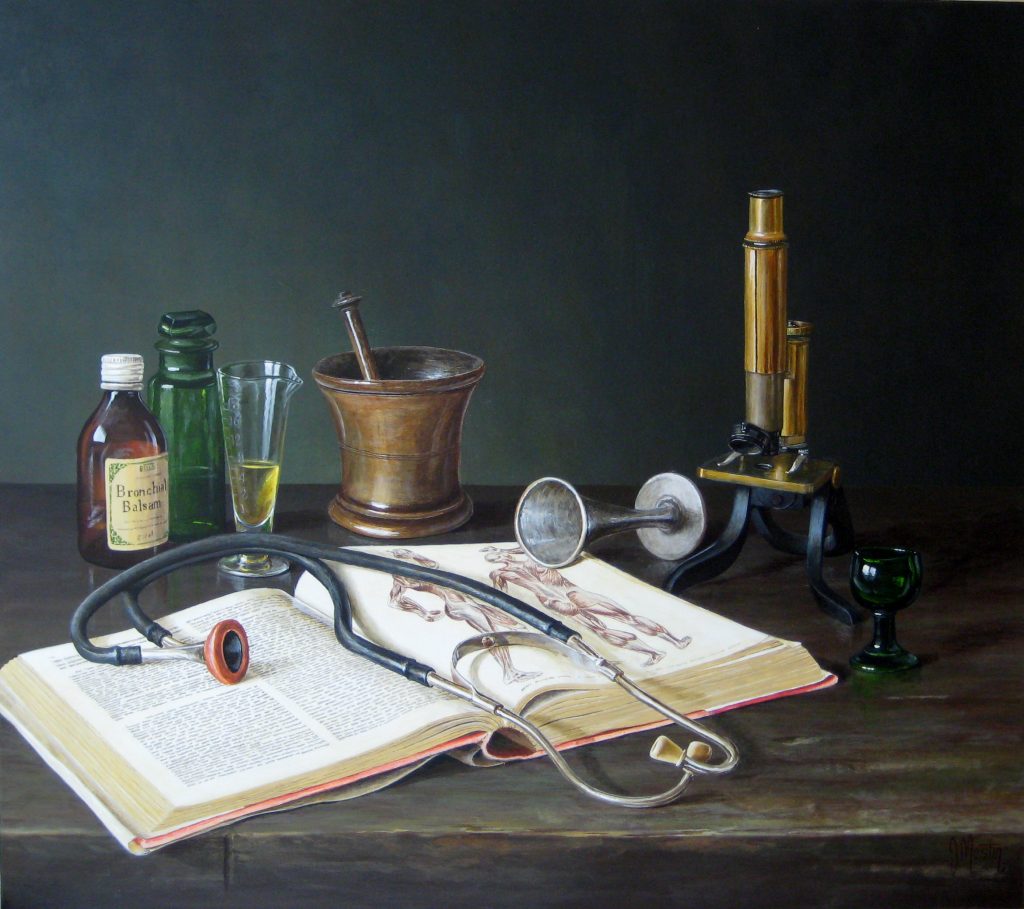
A Life in Medicine
The titles of your work help to date and make comment, discuss this using, Chateau Talbot and The 2019 Collection.
“Chateau Talbot 1949” I love the combination of bread and wine in a painting. For me it evokes a feeling of bonhomie and appreciation for the simple pleasures of life. The vintage denoted on the label is purely a personal aside. Hopefully, it was a good year for the wine. It certainly was for my existence…so far.
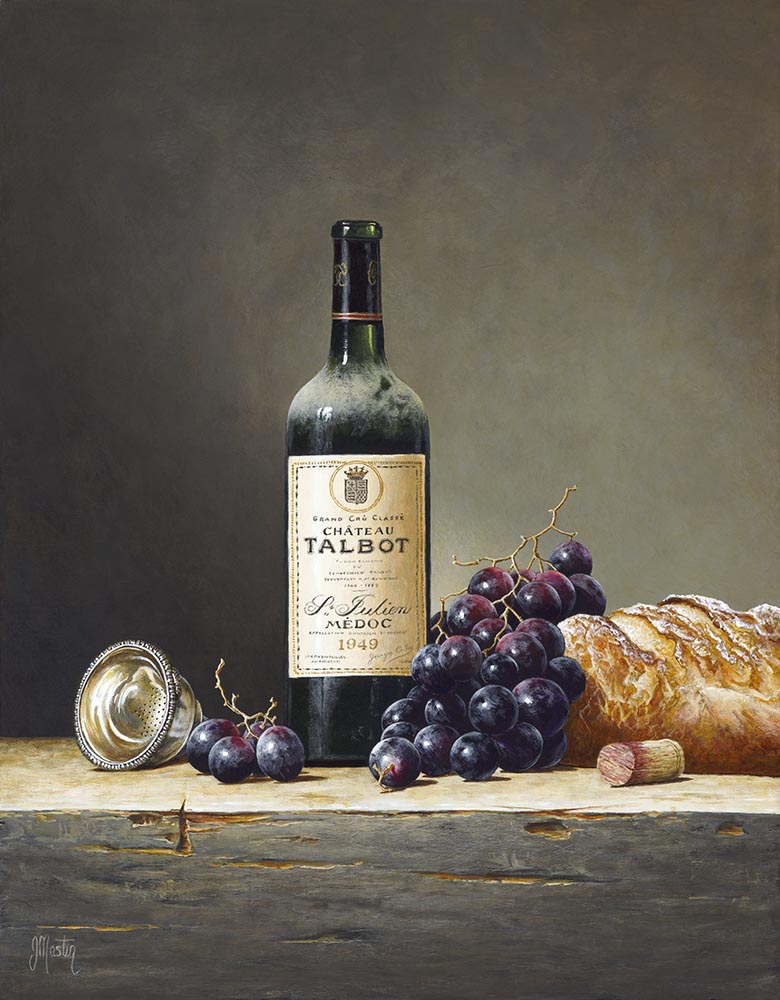
Chateau Talbot-1949
“The 2019 Collection” I never tire of painting old books. So much wisdom, foolishness, humour, pain and every facet of the human condition encapsulated within those pages.
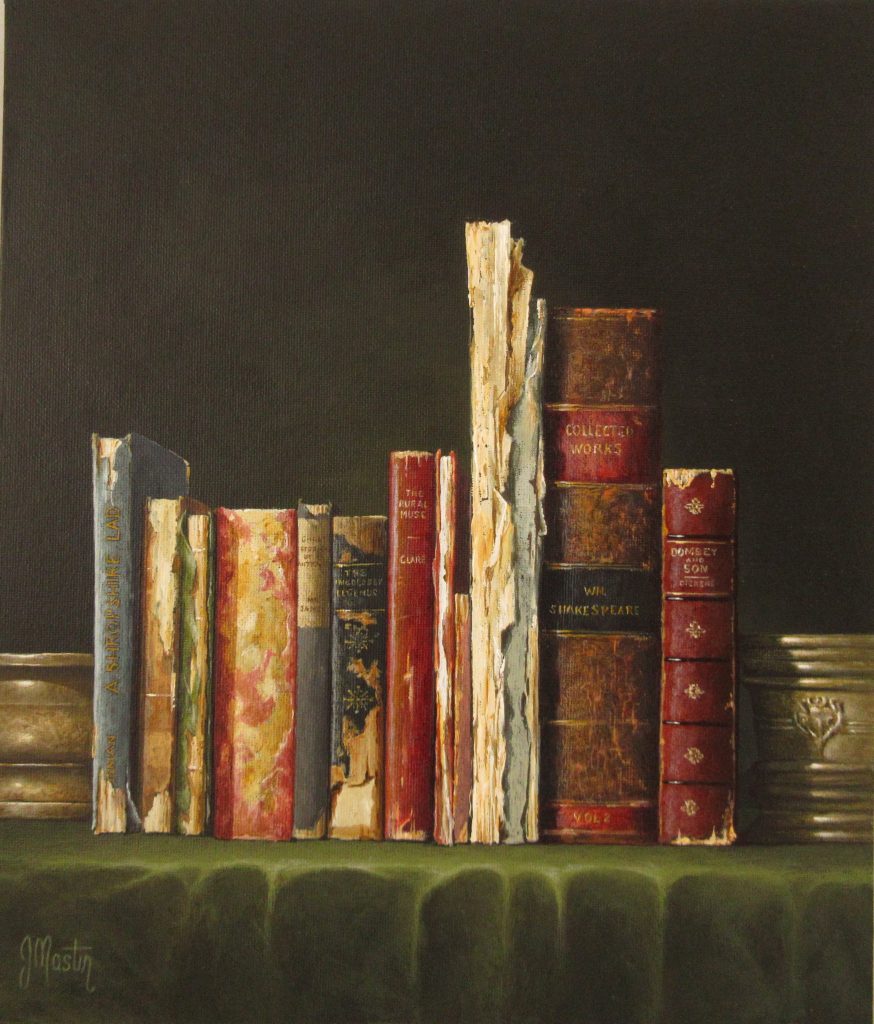
The 2019 Collection
Each year I love to attend Lifeline Book fest, a huge charity event in Brisbane where many tens of thousands of donated books are offered for sale to raise funds. I always gravitate to the section where the oldest books are. I’m looking primarily for books that would present well in my work – well worn, missing spines, falling apart, the tattier the better. The titles are strictly secondary. The 2019 event produced a particularly fruitful bounty. I then exercised a little artistic licence and inserted some of my favourite authors and titles to a few of the pieces featured in this work.
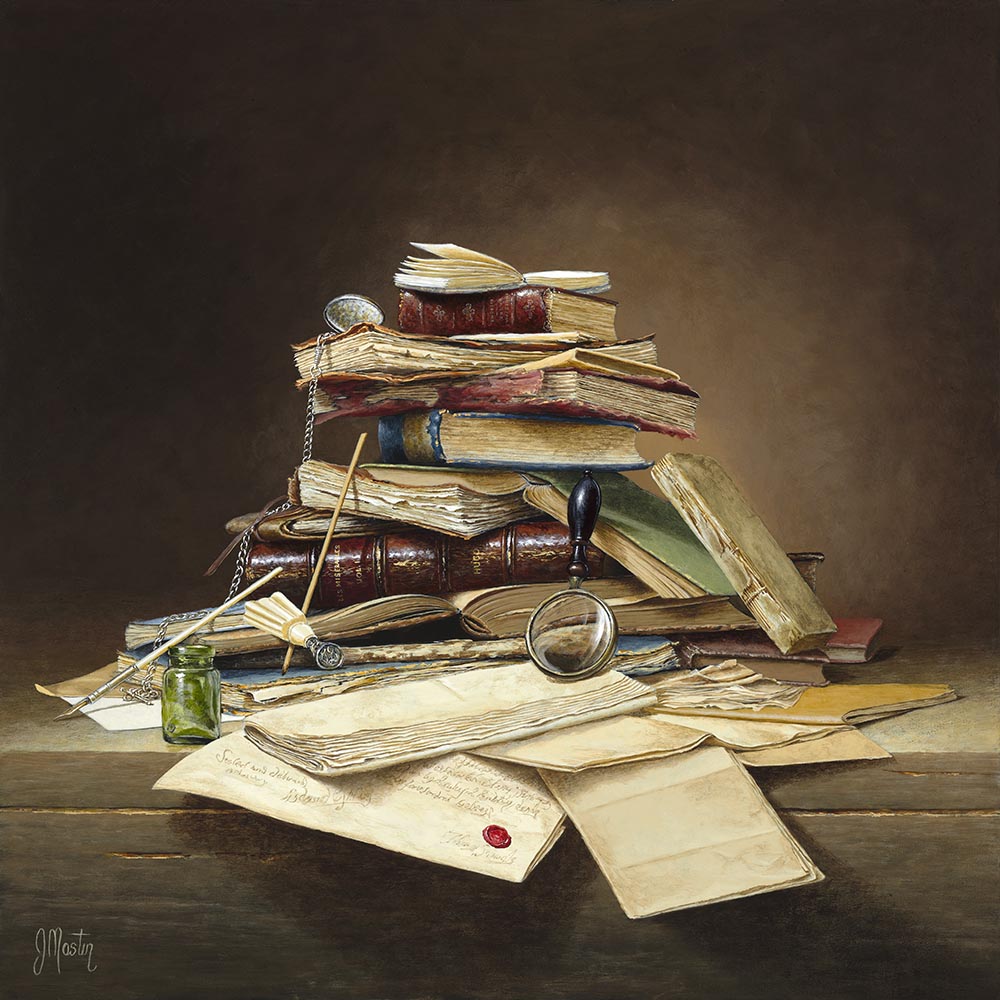
Another Story Must Begin
Your wife gave you a set of watercolour paints. How has her support and encouragement influenced your work since then?
My wife Eleanor is without doubt my best support and most honest critic of my work. Sometimes, when I have been working many hours on a piece and struggling to complete it, I am aware that I have become too close in the minutiae of it to see just what is lacking to bring it to life. I then ask Eleanor what she thinks of the new ‘completed’ work – hoping she will just love it so I can move on. Invariably she will pause, then observe a very basic aspect of the painting that I had missed but becomes obvious once pointed out. In my exasperation I rarely appreciate the extra work at the time, but I know she is right and her open, uncomplicated view is a tremendous asset for me – a genuine muse.
What extra have you been doing during the pandemic?
Recently I have launched a limited, edition reproductions (which are available on my website). and new works are added to this collection regularly.
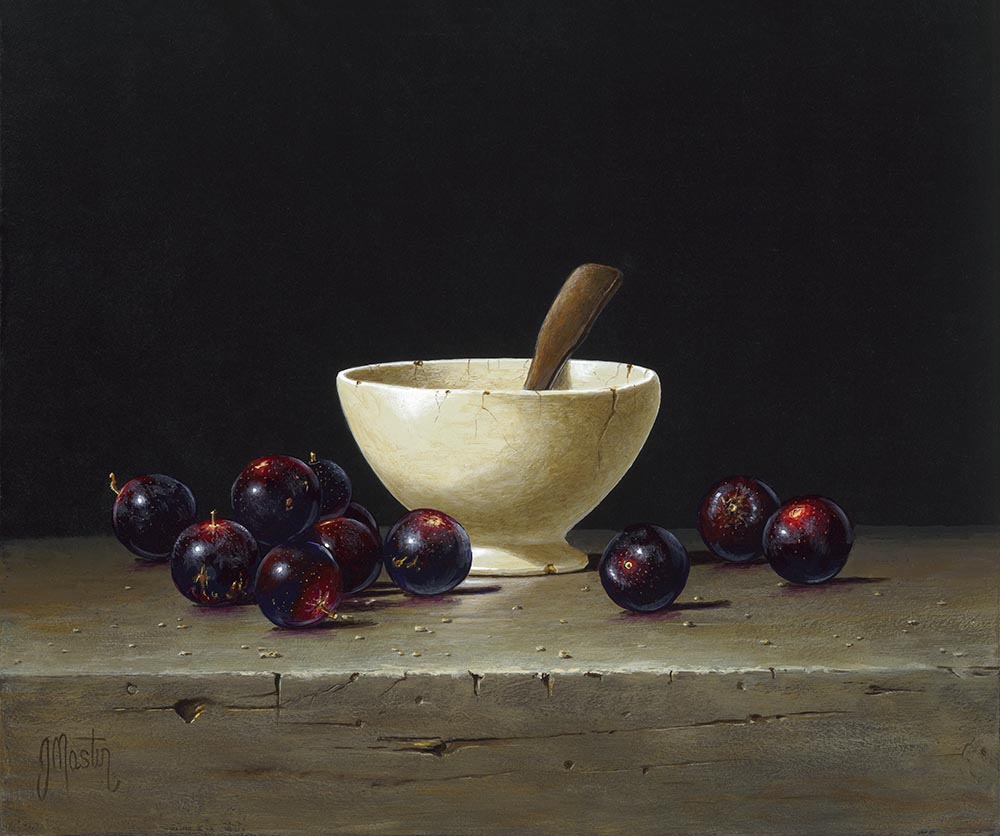
Muscadines Around a Bowl
Contact:
Ian Mastin
Deborah Blakeley, Melbourne, Australia
Interview by Deborah Blakeley, September, 2021
Think a colleague or friend could benefit from this interview?
Knowledge is one of the biggest assets in any business. So why not forward this on to your friends and colleagues so they too can start taking advantage of the insightful information the artist has given?
Other artists you may be interested in:


